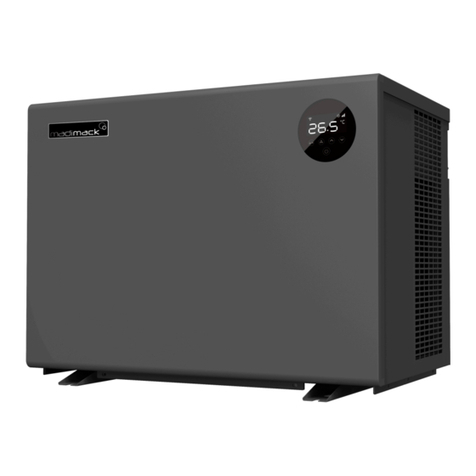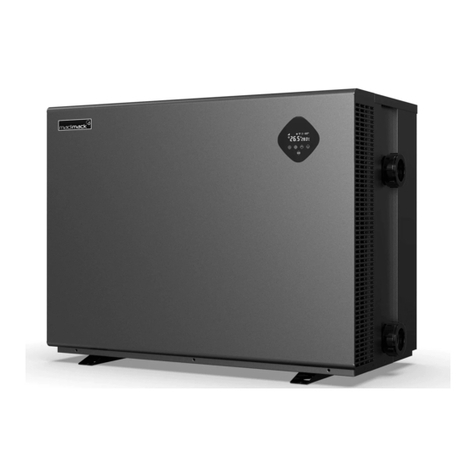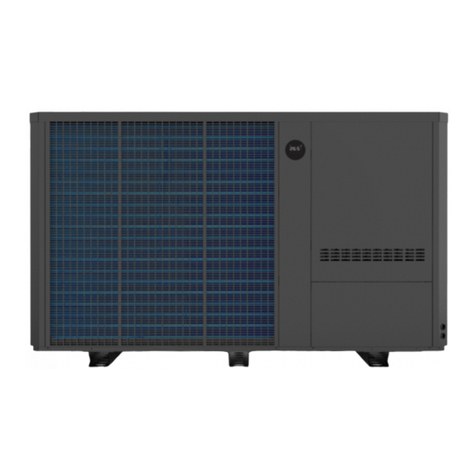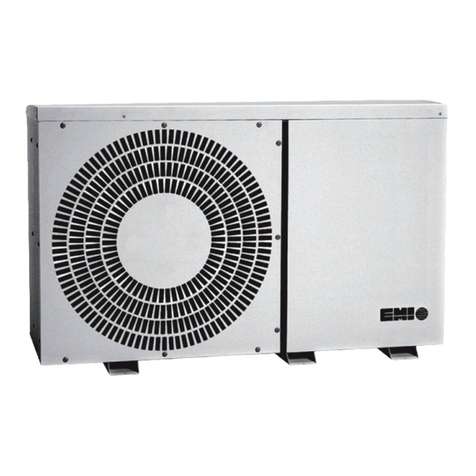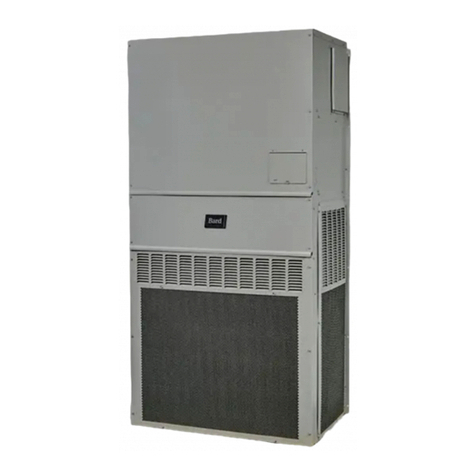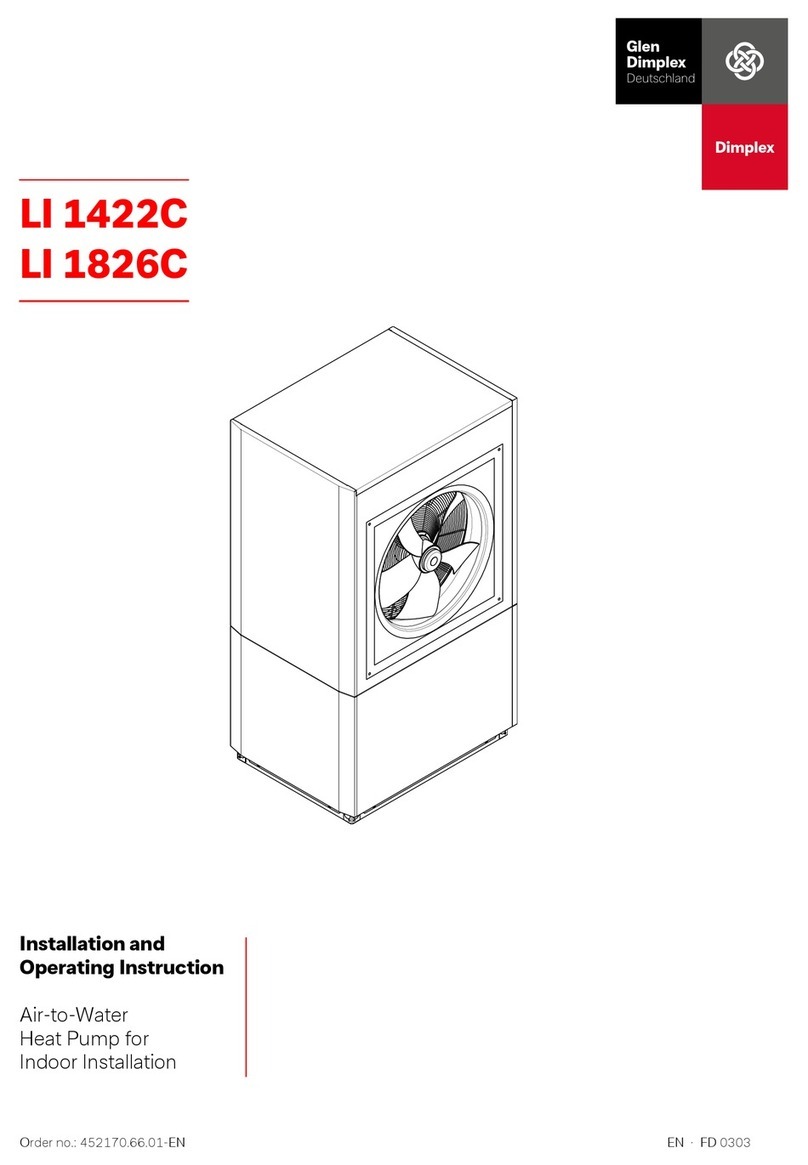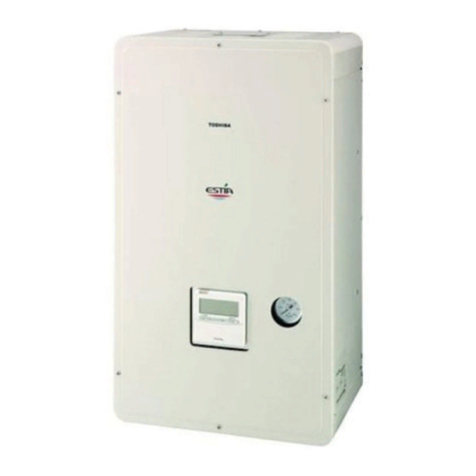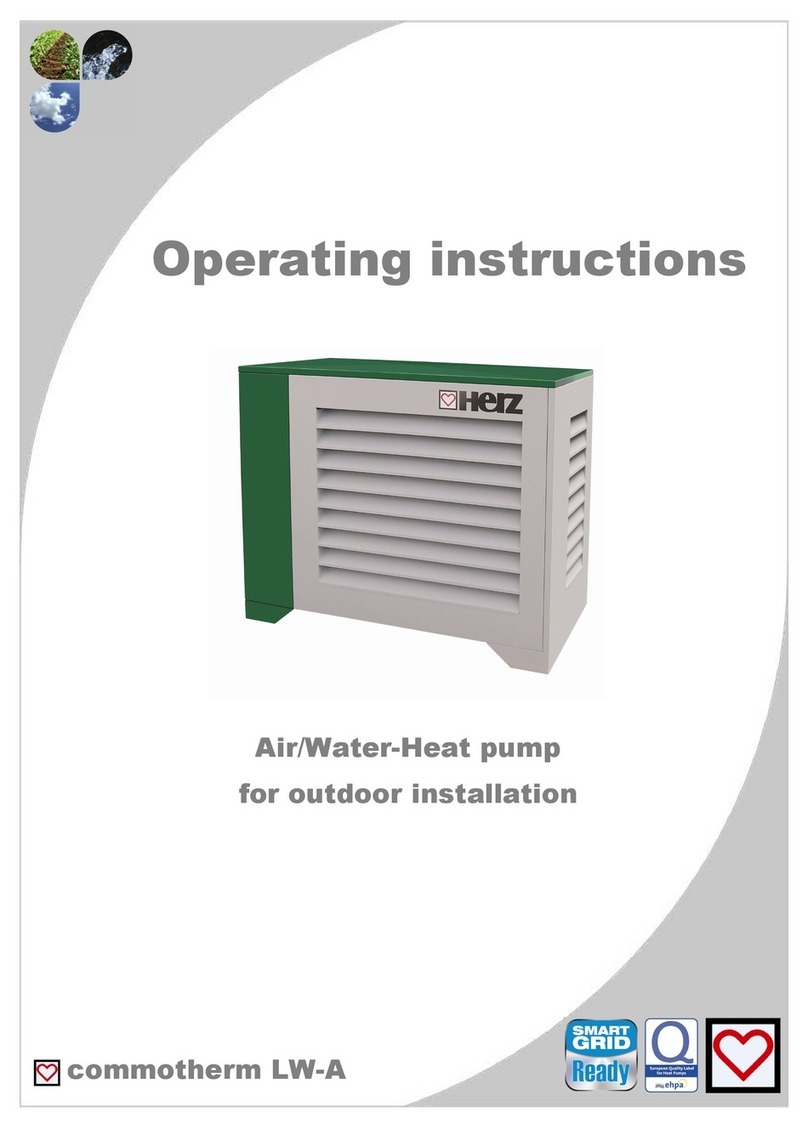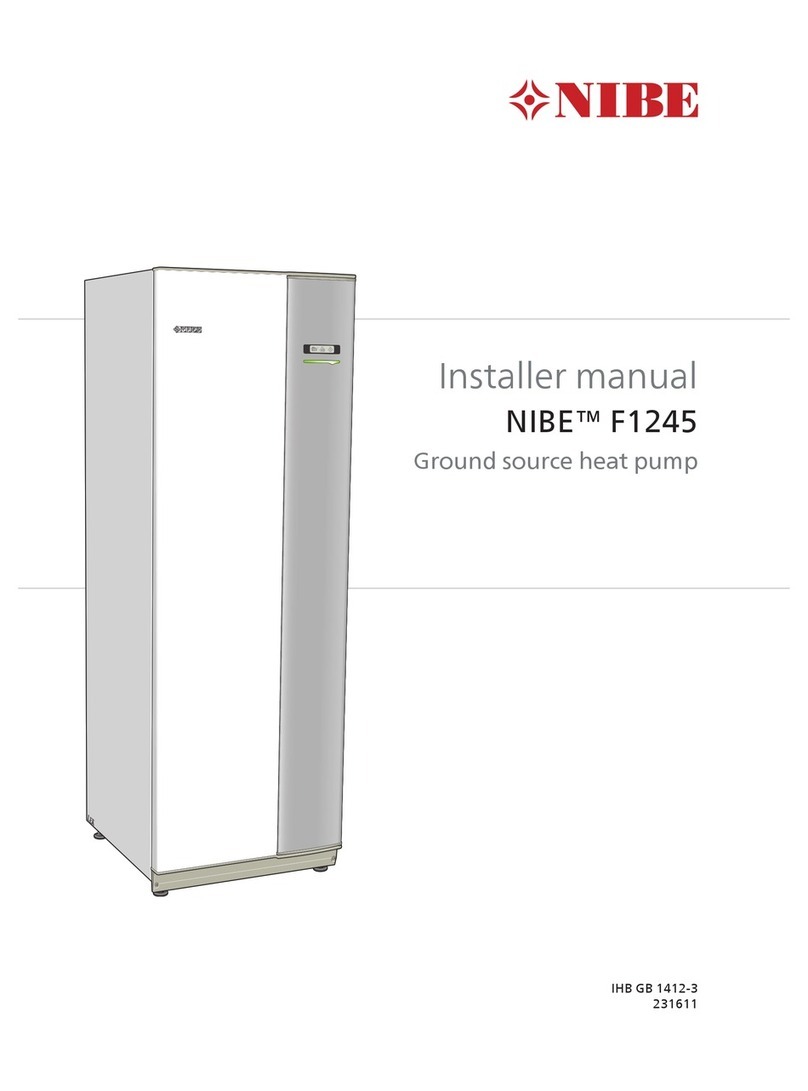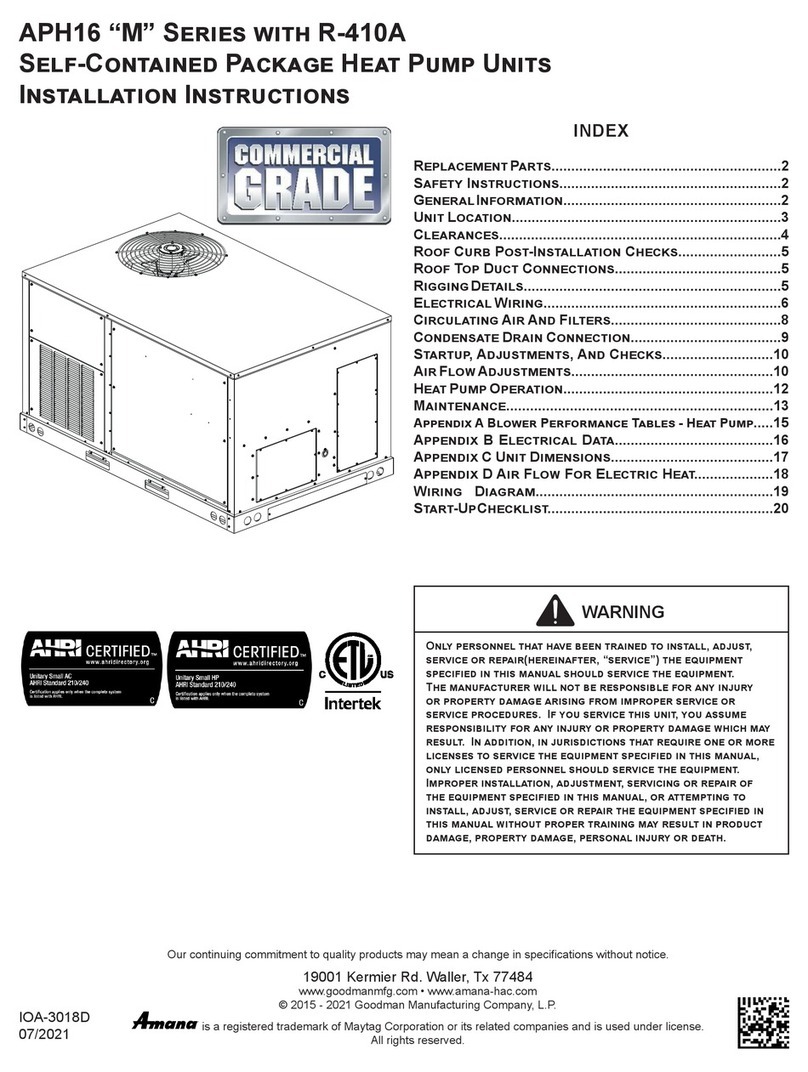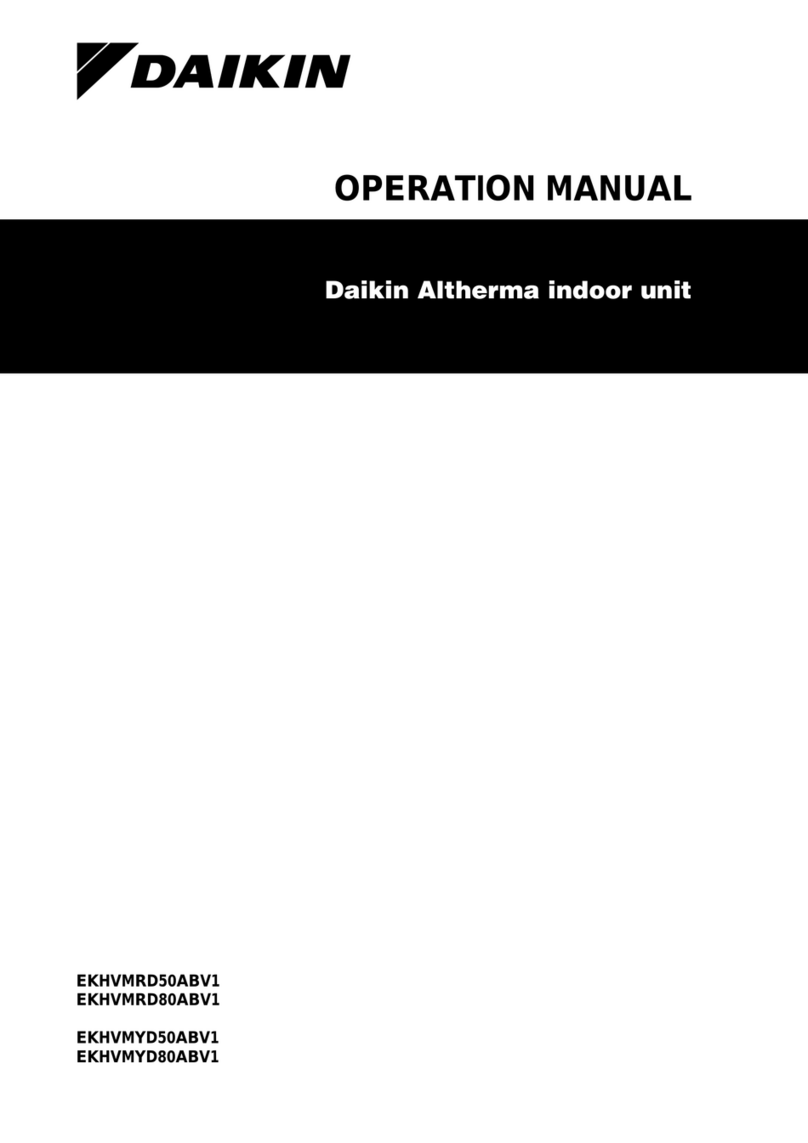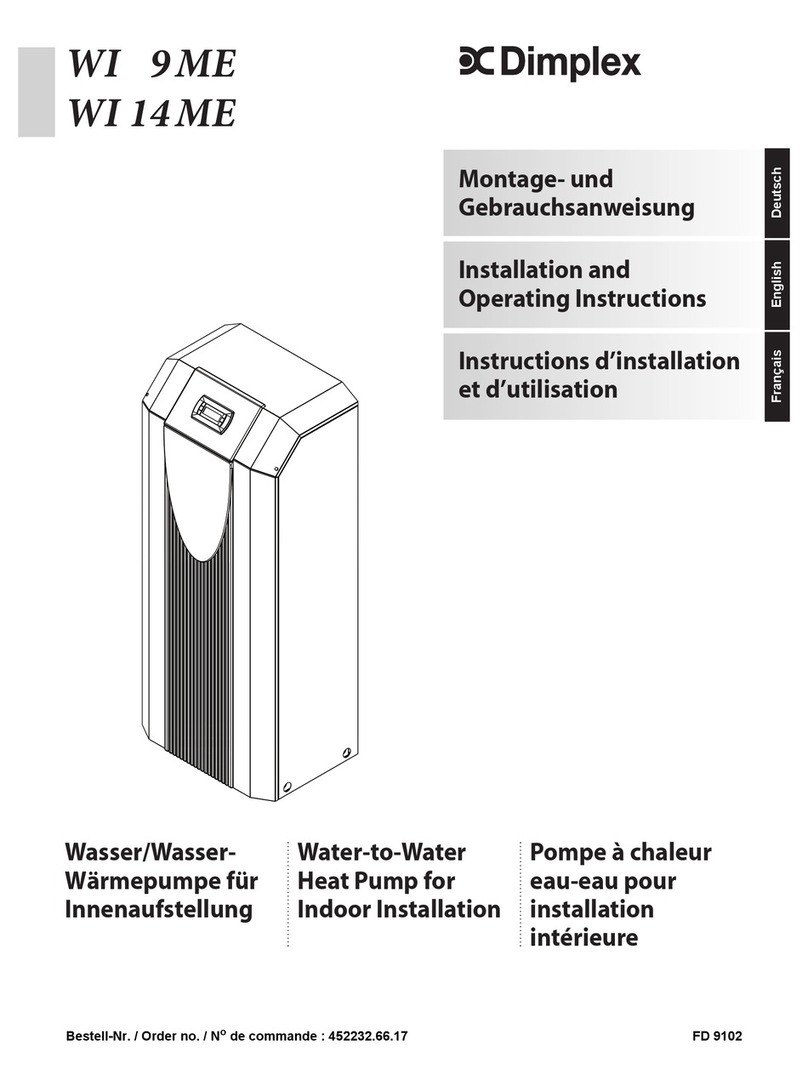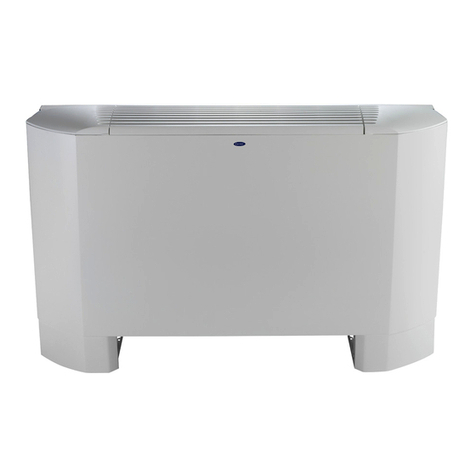Madimack Eclipse User manual

Eclipse
INVERTER POOL HEAT PUMP
User’s Manual

Table of contents
A. Foreword 1
A. Safety Precautions 2
1. Warning 2
2. Attention 3
3. Safety 3
B. About your heat pump 4
1. Transportation 4
2. Accessories 4
3. Features 4
4. Operating condition and range 4
5. Introduction of different modes 5
6. Technical parameters 6
7. Dimensions 7
C. Installation 8
1. Installation requirements 8
3. Wiring requirements 9
4. Electric wiring Diagram 10
5. References for protection devices and cable specification 10
D. Operation guidance 15
1. Display Functions 15
2.Operation Instruction 16
E. Testing 18
F. Commissioning 19
G. Maintenance 20
H. Trouble shooting for common faults 21
I. Appendix 24
Water Testing Pump Output 26
External input 26
J. WiFi operation 27
L. Product Purchase Warranty Registration 9

1
A. Foreword
Thank you for choosing the Madimack high efficiency inverter pool heat pump.
All our heat pumps are built and designed to the highest standard and are protected by our extended
warranty service for peace of mind.
Warranty registration is required to be submitted online in conjunction with the commissioning page and
warranty registration page in the Appendix section at the back of the booklet
www.madimack.com.au/warranty-registration
Please read and fully understand all information provided before attempting to install the pool heat
pump.
For technical questions and further information please contact
We hope you enjoy using our heat pumps.
Thank you!

2
A. Safety Precautions
We have provided important safety messages in this manual for the installation, maintenance and repair
of your heater.
Please read thoroughly and obey all safety messages.
Environmentally friendly R32 Refrigerant is used in this heat pump
1. Warning
This WARNING sign denotes a hazard. It calls attention to a procedure,
practice, or the like, which, if not correctly performed or adhered to, could
result in personal injury or injury to a third party. These signs are rare, but
are extremely important.
a. Keep the heat pump away from fire source.
b. Unit must be placed in a well-ventilated area; indoor or enclosed areas are not
allowed.
c. Repair and disposal must be carried out by trained service personnel
d. Vacuum the system completely before welding.
Welding should only be carried out by professional trained personnel.

3
2. Attention
a. Please read the following instructions before installation, use and maintenance.
b. Installation, must be completed only by competent persons only, and in accordance with this manual.
c. Check all water connections are sealed and tested before operating the heat pump
d. Except for the methods recommended by the manufacturer, do not use any methods to accelerate
the defrosting process or clean the frosted parts.
e. If a repair is required, please contact the nearest after-sales service center. The repair process must
be strictly in accordance with this manual. Repairs made by unauthorized persons may void the
warranty.
f. Correctly set temperature required for personal preference making sure to avoid overheating or
overcooling.
g. Please do not stack substances or other materials which may block the air flows to the inlet or outlet
areas. This causes the efficiency of the heater to be reduced, and may damage the machine.
h. Do not use or stock combustible gas or liquids such as thinners, paint and fuel, to avoid fire!
i. In order to optimize the heating effect, please install heat preservation insulation on pipes between
swimming pool and the heater, and please use a recommended cover on the swimming pool.
j. Connecting pipes of the swimming pool and the heater should be less than 10m.
3. Safety
a. Please keep the main power supply out of reach from the children.
b. If power is suddenly disconnected during operation, and later the power is restored, the heater will
start up automatically.
c. Please switch off the main power supply in high storm weather to prevent the machine from damage
that could be caused by lightning strikes.
d. Any repairs should be carried out in a well-ventilated area. Any source of ignition is prohibited during
the inspection.
e. Safety inspections must be carried before the maintenance or repair for heat pumps with R32 gas in
order to minimize the risk.
f. If R32 gas leaks during the installation process, all operations must be stopped immediately and call
your local service center.

4
B. About your heat pump
1. Transportation
a. Always keep upright
b. Do not lift with the water unions
(The titanium heat exchanger
inside the heat pump may be damaged)
2. Accessories
3. Features
a. DC Twin-rotary inverter compressor of Mitsubishi
b. DC Brushless fan motor
c. EEV Technology
d. High-efficiency twisted titanium heat exchanger
e. Sensitive and accurate temp control and water temp display
f. High pressure and low pressure protection
g. Full protection on electrical system
4. Operating condition and range
To pro v i de y o u co mf o r t and p l e as u r e , pl e a se se t s w imm i n g poo l w a te r t e m per a t ur e e ff i c ie n t ly an d
economically.
a. Air temperature operating range: -10℃~43℃
b. The heat pump will have best performance in operating temperature range of ambient Air 15℃~
25℃

5
5. Introduction of different modes
a. The heat pump has two modes: Boost and Silent
b. They have different strengths under different conditions.
Mode
Modes
Strength
Boost mode
Heating capacity: 20% to 100% capacity
Intelligent optimization
Fast heating
Silence mode
Heating capacity: 20% to 80% capacity
Sound level: 3dB (A) lower than Boost mode

6
6. Technical parameters
Model
MDT130/240MM
MDT160/240MM
MDT210/240MM
MDT260/240MM
PERFORMANCE CONDITION: Air 27°C/ Water 27°C/ Humid. 80%
Heating capacity (kW)
13.5
16.5
21.0
26.0
Heating capacity (kW) in
Silence mode
11.3
13.3
17.5
22.5
COP range
15~6.9
15.2~7.0
15.6~7
15.0~6.9
Average COP at 50% speed
10.6
10.5
11.0
11.0
PERFORMANCE CONDITION: Air 15°C/ Water 26°C/ Humid. 70%
Heating capacity (kW)
10.0
11.7
15.1
18.0
Heating capacity (kW) in
Silence mode
8.6
10.1
12.9
16.2
COP range
7.1~5.0
7.2~5.1
7.2~5.0
6.5~4.5
Average COP at 50% speed
6.7
6.8
6.7
6.0
TECHNICAL SPECIFICATIONS
Advised pool volume (m3) *
35~65
40~70
50~90
60~120
Operating air temperature (℃)
-10℃~43℃
Power supply
230V 1Ph
Rated input power (kW)
0.42~2.00
0.48~2.29
0.62~3.02
0.80~4.0
Rated input current (A)
1.83~8.70
2.08~9.95
2.69~13.13
3.5~17.4
Sound level at 10m dB(A)
21.0~32.0
21.2~34.9
32.8~34.7
31.5~35.2
Advised water flux (m³/h)
4~6
5~7
8~10
10~12
Water connection (mm)
40
Remarks:
This heat pump is able to perform normal within air temp -10℃~+43℃, efficiency will not be guaranteed
out of this range. Please take into consideration that the pool heater performance and parameters are
different under various conditions.
Related parameters are subject to adjustment periodically for technical improvement without further
notice. For the most up to date details please refer to nameplate on the heat pump.

7
7. Dimensions
※ Above data is subject to modification without notice.
Note: The picture above and the specification diagram of the pool heater is for the technician’s
installation and layout reference only. The product is subject to adjustment periodically for improvement
without notice.
A
B
C
D
E
F
G
H
MDT160/240MM
685
423
689
710
780
340
75
656
MDT210/240MM
685
423
689
710
780
390
75
656
MDT260/240MM
685
423
689
710
780
460
75
756
Name
Size(mm)
Model

8
C. Installation
1. Installation requirements
Only competent persons are authorised to install the heat pump and should be educated with the
relevant building codes and standards of their current state or local governing body for all electrical,
mechanical and water services to prevent danger or damage to the unit.
a. Location and clearances
- See appendix for further ventilation scenarios
The inverter pool heat pump should be installed in a well-ventilated place.
b. Typical installation diagram
Installations can differ dependent on site conditions below is only a representation of one possibility.
Note: the inlet and outlet positions for the pipework is a representation only and can be positioned
differently.

9
2. Placing the unit and water connections
a. Placing the unit and fixing
• The frame must be fixed by bolts (M10) to a concrete foundation or brackets. The concrete
foundation must be solid and fastened; the bracket must be strong enough and anti-rust treated.
• Do not stack substances that will block air flow near the inlet or outlet area, and there should be
no obstuction within 50cm behind the machine. Suffication of air reduces the efficiency of the
heater and could damage the unit.
• The machine may need an additional pump (not supplied). The recommended pump must
adhere to the specification-flux of the machine, please refer to the technical parameters.
b. Water connections and condensation
• The inlet and outlet water unions should not be installed with soft flexible pipes. The heat pump
must be connected with rigid pipes!
• When the machine is running, condensation is created and discharged from the bottom. Please
place the drainage nozzle (accessory) into the hole and clip it well, then connect a pipe to drain
the condensation water away.
3. Wiring requirements
a. Connect the heat pump to an appropriate power supply, the voltage should comply with the rated
voltage of the product.
b. The machine must be earthed
c. Wiring must be handled by a professional technician according to the circuit diagram.
d. Install electrical protection device according to local code for wiring
e. The layout of power cable and signal cable should be orderly and not affecting each other.

10
4. Electric wiring Diagram
a. For power supply: 230V 50Hz
Attention: The pool heat pump must be earthed.
5. References for protection devices and cable specification
※ Above data is subject to modification without notice.
Note: The above data is associated to power cables less than 10m. If the power cable is longer than
10m, the wire diameter must be increased in accordance with current regulations. The signal
cable can be extended to a maximum of 50m.
Please see appendix for further wiring information including pump control and auxiliary input
a. Flow switch activated heating
MODEL
MDT160/
240MM
MDT210/
240MM
MDT260/
240MM
Breaker
Rated Current
(A)
16
21
24
Rated Residual
Action Current
(mA)
30
30
30
Distribution Box (Not Supplied)
Earth
Power Supply
230V 50Hz
Breaker
Fuse
Power Cable
Heat Pump Wiring Board

11
6. Installation options
The heat pump is activated by the flow of water initiated from the filtration circulation pump, if
the heater gets to temperature within the timers the unit will first start to use the inverter
technology to slow the machine down to maintain the temperature and eventually to a stop.
1- Chlorinator controller initiates the filtration pump.
2- Heat pump’s flow switch senses the water flowing through the heat pump.
3- Heat pump starts and will run until temperature is reached or filtration pump switches off
4- No additional internal wiring to the heat pump is required in this set up
5- No additional settings needed to be changed
6- If circulation pump is not running and no flow is detected unit will display E3 – this is normal and
an indication the unit is sitting idle waiting for the filtration pump to start again.
7- If the pool temperature is not reached within the filtration times you may need to extend the
timers to match the heating requirement.

12
b. Heat pump activation without using the chlorinator controller and using the
one pump used for filtration (additional controller required)
An on board pump output relay can activate the main filtration pump by using it in
combination with a single pump controller without using the chlorinator timers needing to
be activated which will stop over chlorination but still use a single supply pipework for
the pool. This set-up is best when only single pipework is available from pool and doesn’t
have individual heating pipework. Efficient with only one pump working.
1- The pump output switch relay labelled P1 – P2 in the heat pump can activate the filtration pump
through the single pump controller (MJ-Box), therefore being able to run the heat pump
individually with the same pump
2- Relay switch P1 – P2 are initiated as soon as the heat pump is turned on, the output will run the
circulation pump until the heated water reaches the set temperature or is switched off by the WiFi
timers.
3- If the unit reached temperature still within the timer set points, the unit will test the water by
starting the filtration pump once an hour for 2 minutes to get an accurate temperature reading
and will start heating process again if required.
4- When Wi-Fi timers are set through the app Relay switch will run the pump output accordingly.
5- Timers for the heat pump are on the Wi-Fi app (If no WiFi available additional timer may be
required) internal setting require changing to suit this operation.
6- See electrical diagram supplied with M-box for further information.

13
c. Individual circulation pump installation.
An onboard output initiates the circulation pump to start and stop from the heat pump itself
based on temperature and timers. For use when there are dedicated heating pipes and to
separate from the filtration timers.
1- Termination points are labelled P1-P2 from the on-board relay and is activated by the timers and
pool temperature, and will continue to run the pump until the heated water reaches the set
temperature or the timer switches off.
2- Once temperature is reached or the timer is finished the heat pump will switch off the relay output
stopping the circulation pump.
3- If the pool reaches temperature but the timer is still active the heat pump will switch off relay to stop
the circulation pump. Whilst the timer is still active every hour it will run the circulation pump for 2
minutes to test the water temperature. If the temperature is 1 degree below set point the heat
pump will continue to run the circulation pump and start the heating process again.
4- P1 – P2 relay up to 10A output for circulation pump (check total load on circuit when combined) (P1
and P2 is an output relay switch not active neutral terminals, please see wiring diagram for further
information.
5- Heat Pump timers are set through the mobile application and required a WiFi connection. If no WiFi
is present then additional external timer may be required (sold separately)
6- It is recommended to install a power point for the pump to plug into for any future service work to the
pump which may be required.
7- Circulation pump should be sized accordingly to suit the site conditions and flow required.

14
d. Solar retro
In some situations, when a heat pump is replacing a solar heating system, the pipework is
available to be used next to the house but there is no way of adding a new electrical circuit to
the pool equipment. With the use of an additional temperature sensor you can use the
in-built flow switch to activate the heating. Allowing you to use the existing solar pump and
to install the heater closer to the switch board.
1- In may be impractical to get a new power cable from the house switch board to the pool
equipment area due to finished flooring etc, in this case It may be possible to use the existing
pipework which connects to the house and install a power cable from there.
2- An external thermostat controller can initiate the existing circulation pump, thus running the heat
pump through the flow switch for full temperature control.
Please speak to you installer for more information.
3- No additional wiring to the heat pump is needed internally
4- Timers are set on the external thermostatic controller
5- Set heat pump a couple of degrees above the set point temperature of the external temperature
controller.
e. Automation system
The heat pump comes with easy to connect terminals in the electrical compartment labelled as 5
and 6. The unit comes prewired with a bridge cable connected. To add an external control to active
the heat pump removes the bridge and add in a volt free terminal connection. Please check with the
automation system provider that the connection is volt free and the best way to install with their
set-up.

15
D. Operation guidance
1. Display Functions
Symbol
Designation
Function
ON/OFF
Power On/Off
WiFi setting
Unlock
1. Lock/Unlock Screen
2. Heating mode (18-40°C)
3. Cooling mode (12-30°C)
4. Auto mode (12-40°C)
Speed Mode
Two modes: Boost Silence
UP/DOWN
Temp e r atu r e S e t t i n g & D i spl a y in g
a. Standby mode or Screen lock:Only symbol lights up, screen and other buttons turn darker.
b. Power off mode: Only symbol will light up,No display on screen.
c. The controller has a power-saving mode and will not display bright when locked.
d. The controller has a built-in memory so all parameters are saved in the event of power loss

16
2.Operation Instruction
a. Screen Lock
1) Press button for 3 seconds to lock or unlock the screen
2) Display automatically locks in no input is detected after 30 seconds.
b. Power On
Press for 3 seconds to unlock screen, Press to power on machine.
c. Temperature Setting
Press and to display and adjust set temperature.
d. Mode Selection
1) Heating/Cooling/Auto
Press “ ” to switch among heating ” ”, cooling ” ” and auto mode ” ”.
Heating mode “ ”: Water temperature setting range(18-40°C)
Cooling mode “ ”: Water temperature setting range(12~30°C)
Auto mode “ ”: Water temperature setting range(12~40°C)
* When water inlet temperature is higher than setting point, automatic cooling mode starts.
* When water inlet temperature is lower than setting point, automatic heating mode starts.
e. WIFI
Download InverGo app from Apple app store or Google Play store.
Set up new account, enter WiFi password and click add new device (Enter area code +61 when
registering by phone number)
When the screen is unlocked, hold button for 3 seconds, after symbol will begin flashing.
WiFi connection process has now started on the unit.
Now press Bind Device on mobile device.
System should now have connected within the minute and now enjoy controlling the unit through WiFi.
When WiFi is connected symbol is displayed.
To c l e ar t h e W i F i setting history on machine. When the screen is on, press and hold for 10 seconds,
symbol will flash fast for 10 seconds then switch off.

17
c. Defrost cycle
• Automatic active defrosting
When the machine is operating in low temperatures it is very common for ice to build up on the
external coil. The heat pump has a built in defrost protection program which will activate when it
senses ice starting to form.
When machine is defrosting, starts flashing; after defrosting is on continuously
• Forced defrosting,
If the heat pump requires manually defrosting for testing or a sensor is faulty please follow these
instructions, the machine must be in heating mode and the compressor is working continuously for
more than ten minutes, Whilst the unit is running, press and on the
controller simultaneously and hold for 5 seconds. When the symbol is flashing, defrost has
started, and will continue until the external coil temperature reaches a certain temperature adequate
for continuued operation. If the symbol stops flashing forced defrost has stopped.
*Note: the interval between forced defrosting should be more than 30 minutes apart.

18
E. Testing
1. Heat pump checks before use
a. The air inlets and outlets are free of any debris and are not obstructed.
b. Refrigeration pipes or components are not installed in a corrosive environment.
c. Check electric wiring connections are tight and adhere to the electrical schematic
d. Check for water leaks around the machine and all new water connections
2. Refrigerant leak detection
a. Leak testing is prohibited in enclosed areas
b. Any source of ignition is prohibited during leak checks.
c. Leak detection fluids can be used with most refrigerants but the use of products containing
chlorine should be avoided as the chlorine may react with the refrigerant and corrode the
copper pipe.
d. Vacuum the machine completely before welding. Welding should only be carried out by a
professional person in a service center.
e. Please stop immediately if a gas leak occurs, and contact your local service center.
3. Trial Run
a. The circulation pump must start before the heat pump and stop after the heat pump to avoid
any damage occurring to the machine.
b. In order to protect the heat pump, the machine is equipped with a time lag start function, the fan
will run 1 minute earlier than the compressor when starting the machine, and it will stop running
1 minute later than the compressor when power off the machine.
c. After the heat pump starts, check for any abnormal noises from the machine.
Running status codes and corresponding values
4. Running status check
a. Press and hold for 5 seconds, a
beep sound should be heard and it will
enter into running status mode
b. Use and to switch through
the different values
c. Press again to quit can running
status mode
Symbol
Content
Unit
C0
Inlet water temp
℃
C1
Outlet water temp
℃
C2
Ambient temp
℃
C3
Exhaust temp
℃
C4
Outer coil pipe temp
℃
C5
Gas return temp
℃
C6
Inner coil pipe tem
℃
C9
Radiator temp
℃
C10
Electronic expansion
valve opening
P
This manual suits for next models
4
Table of contents
Other Madimack Heat Pump manuals
Popular Heat Pump manuals by other brands
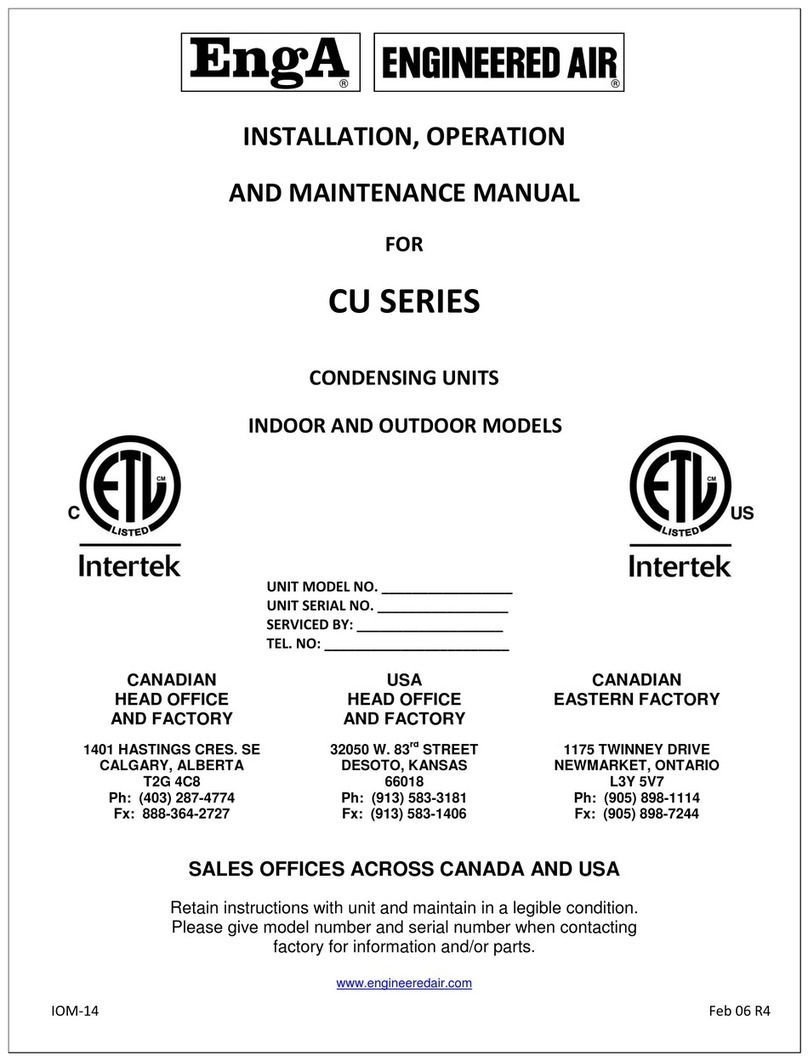
Engineered air
Engineered air EngA CU Series Installation, operation and maintenance manual

Goodman
Goodman GSH130181A Series Technical information manual

STIEBEL ELTRON
STIEBEL ELTRON wpf 20 Operation and installation manual

Mueller
Mueller E-Star OESE Installation and operation manual
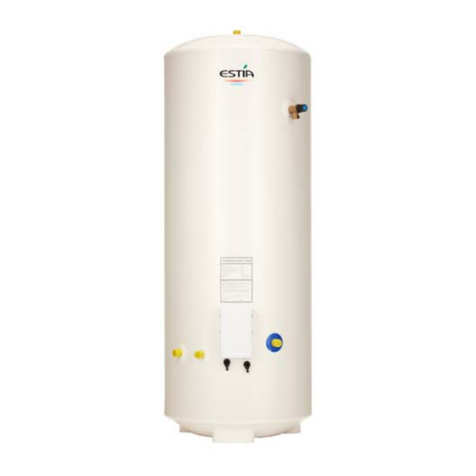
Toshiba
Toshiba HWS-1403H-E installation manual
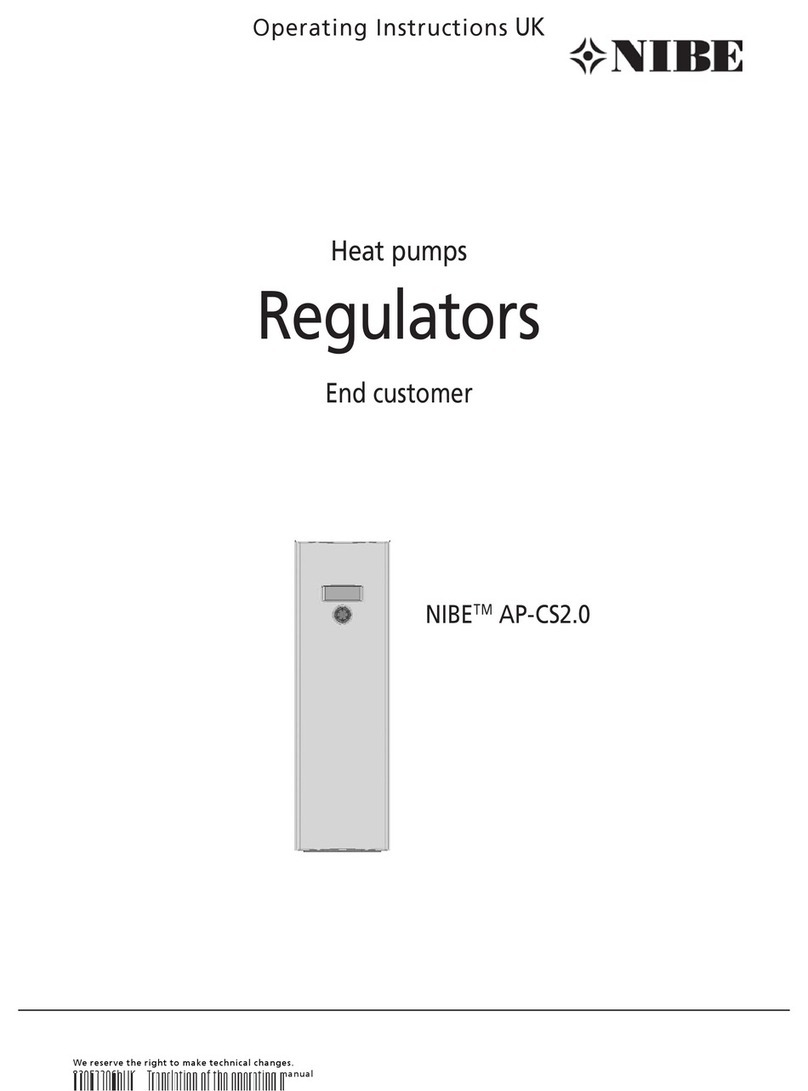
Nibe
Nibe AP-CS2.0 operating instructions
